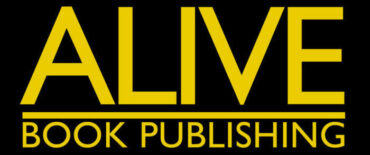There are three ways to have one’s book published: traditional, subsidy, and self-publishing. All have advantages and disadvantages, and the path one takes largely depends upon the reason(s) for wanting to see one’s book in print. Some authors simply want to see their work bound in a book format with the intention of sharing it with family and friends; some have a desire to share their story or communicate an idea, and some have commercial success in mind, even if as only a “side benefit” of reason number two.
Path #1: Traditional Publishing
In the past, the traditional route was considered the only path. This is where an author begins the process by sending query letters—essentially a “sales pitch,” intended to capture the attention of a literary agent or publisher. The query letter includes a description of the work and the intended audience for it, along with some information about the author (a bio). In this case, if the author’s pitch is compelling, they may be afforded an opportunity to have a publisher review the author’s manuscript, and if it is “good enough,” the publishing house may agree to publish the author’s work. If one hopes to have their work considered by publishing houses like Random House or Harper Collins, it is essential that the author be represented by an experienced agent.
Unfortunately for most, this path is a long, unfulfilling process. Few authors “make the cut,” as most agents and large publishing companies are so inundated with queries that they reject all submissions they are unable to classify with 100% certainty as “marketable.”
The most likely candidates to have their work represented by established agents and considered by “Madison Avenue” publishing houses are celebrities and personalities with well-recognized names (the Clintons, Trumps, Kaepernicks, and Kardashians) or authors who have already demonstrated—through previous subsidy or self-publishing success—that their work sells. Publishing is, first and foremost, a business and the days of “speculating” on unknown authors are long gone. The only relevant question publishers ask about an author’s manuscript is: “How many books will sell upon release?”
For example, prior to January 2009, our Magazine’s (ALIVE) fitness columnist was Lorrie Sullenberger, the wife of the now famous pilot, Sully. Prior to his successful landing in the Hudson River, had Sully approached the major publishing houses with a query letter about his experiences as an airline pilot, it’s likely he would have received the typical response—a rejection letter.
However, after a flock of geese collided with his plane and his subsequent artful skill in landing that plane, Sully became an instant celebrity—and a marketable commodity. The result? He was offered a two-book deal by a major publishing house, and eventually a motion picture was produced about the “Miracle on the Hudson.”
While traditional publishing provides advantages—namely brand recognition and the ability to have books placed onto the shelves of major book retailers, the profit margin for authors on each book sold can be miniscule. Publishers are betting on mega-sales—preferably millions of books—so they are looking for authors that fall into just a few, select categories. First, they look for “proven” authors; ones who can re-produce work that will be eagerly snatched-up by fans (the Grishams, Kings, Steels, Pattersons and Rowlings). Next, they are happy to publish the works of someone well known and currently popular; actors, sports stars and politicians for example; or anyone making news, like Sully, right after his remarkable landing.
In all these cases, if all goes as hoped, an author might earn thousands or even hundreds of thousands of dollars. And the publishing houses, of course, enjoy significant returns in all these scenarios too.
But what if you are chosen by a major publishing house and your book doesn’t sell in the thousands? In that case there are challenges associated with traditional publishing. First off, major publishing houses will remove a book from circulation—designate it as “out of print”—if it fails to sell in significant quantities. Worse still, if a book fails to meet the publisher’s sales expectations, they will often demand that any “advances” paid to an author be returned. Ouch!
Unless one has already sold thousands of copies of his work, or has the last name Kardashian or Clinton, otherwise unknown authors will likely never see their book published. The only reasonable—and wisest—route open to this young author is self or subsidy publishing.
We will cover the “ins” and “outs” of those publishing options–Self Publishing, and Subsidy Publishing– in upcoming posts, so stay tuned!
